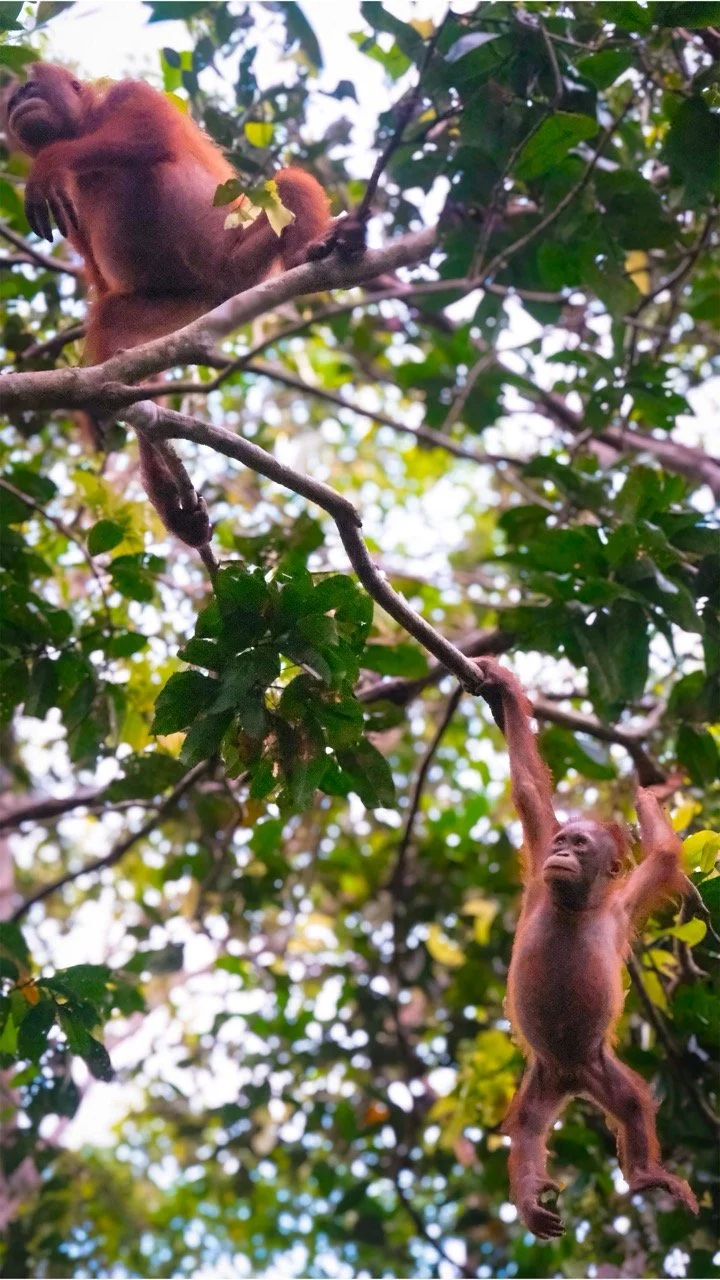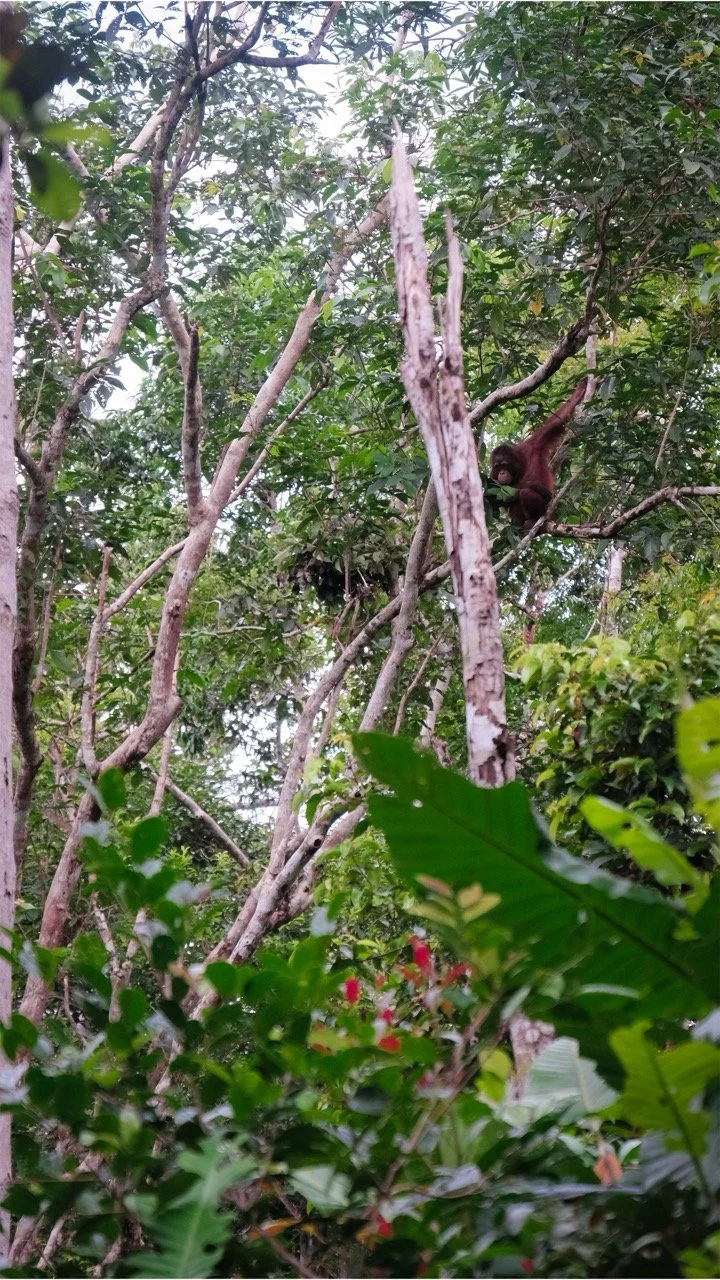“If we can attract tourists to see orangutans in their natural habitat, it can help raise awareness and get more people interested in protecting the forest.”
Niken & Siska, Education Managers
Niken: My journey with orangutans began when I was doing research for my undergraduate studies in the Lower Schwaner Mountains, in West and Central Kalimantan. That helped me realize just how important orangutans are in maintaining the balance of the forest.
The first time I went into the forest, surrounded by giant Dipterocarpaceae trees, I was lucky enough to encounter an orangutan. Seeing it up close, I was fascinated how its behavior reminded me of human behaviour, how similar we really are. Like when it started raining, as I was rushing to find my umbrella, I saw an orangutan gathering branches and leaves to shelter itself.
Siska: Orangutans need the forest, and we need orangutans. But sadly, many people have never even seen one. This is why I work in this field, to raise awareness and help people understand that orangutans are unique to Kalimantan and Sumatra.
Niken: I work in orangutan conservation education, often with children at various schools. Many of them have never seen an orangutan, even though they live so close to their habitats, and some even think it’s gorillas that live here rather than orangutans. But when we show them pictures, with their dark brown hair and human-like expressions, the kids are often shocked and excited.
They love learning how orangutans can smile, get sad or angry, just like humans.
They usually end up hoping to one day see them in their natural habitats. It’s moments like these that make my job so rewarding.
One of the big challenges is helping them understand why orangutans need protection in the first place. Children would sometimes ask unexpected questions, like “Why do we need to protect orangutans if they only live on two islands in Indonesia?”
It’s important that they feel connected to orangutans and understand their role in the ecosystem before learning why they need to protect them. We use storytelling, puppets, books, or even dress up in orangutan costumes to make it more interactive, to present things in a fun and engaging way, so they remember what they learn.
Working with adults is different; they are more focused on their livelihoods, especially in communities that depend on the forest, so we have to approach the conversation carefully, starting by introducing the idea that orangutans are vital to the forests of Kalimantan, showing them that protecting orangutans doesn’t mean they can’t continue to benefit from the forest. It’s a delicate balance.
Photo by Jorge Franganillo - Tanjung Puting National Park, CC BY 2.0
Siska: Yes, it’s all about making sure people understand that orangutans are important, not just for the forest but for all of us. By protecting orangutans, we’re also protecting the environment we depend on. We collaborate with local communities, government and NGOs, to try to find ways for people living near the forest to benefit from the forest, without damaging the habitat.
We collaborate with local communities, government and NGOs, to try to find ways for people living near the forest to benefit from the forest, without damaging the habitat.
We’ve also been looking at the role tourism can play in protecting orangutans. If we can attract tourists to see orangutans in their natural habitat, it can help raise awareness and get more people interested in protecting the forest. The more people know about orangutans, the more they’ll want to help.
The more people know about orangutans, the more they’ll want to help.
More Stories






